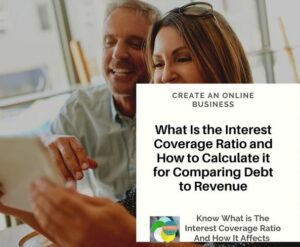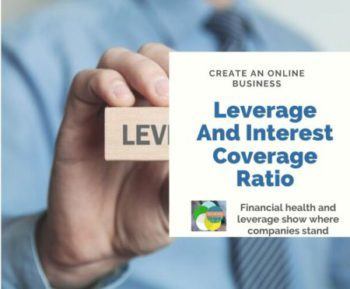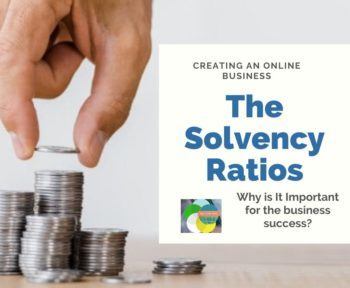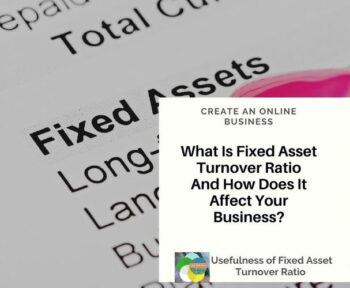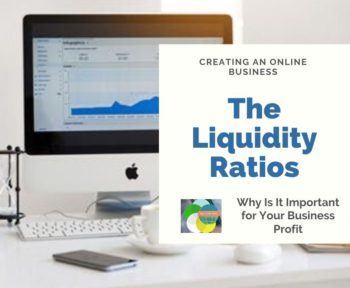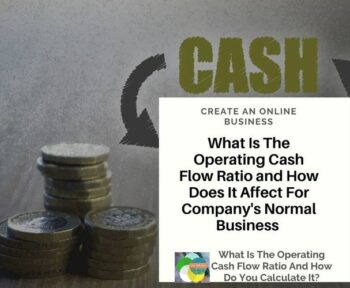An interest coverage ratio is a measurement of how effectively a company can pay its debts off. It is unique in that it takes interest into account, revealing whether or not the company can pay down the interest enough to reduce the overall debt over time especially with the calculation done by the interest coverage ratio formula.
This number gives a lot of detail to the company but, investors get much more use of it. When an investor or entity has an interest in a company, the interest coverage ratio will show the potential for risk.

Investors look at this number to show whether or not there is a potential for profit. If bills and other monthly operation expenses are too high, then it might not be worth the purchase. If an investor is looking into purchasing a company, they normally want one that can sustain, paying bills and costs on time.
From a creditor standpoint, the interest coverage ratio shows whether or not the company can take on more debts. This could be in the form of an additional loan or expansion of services. Creditors tend to shy away from companies that have low potential to pay to avoid faulty or late payments.
A Breakdown of the Interest Coverage Ratio Formula
The formula for interest coverage ratio requires a few figures. One is the earnings before interest and taxes (EBIT) and the other is the expense of interest. These numbers are set up in a fraction to give the interest coverage ratio, where EBIT divides by interest expense.
The amount of EBIT more accurately gives banks a representation of the amount that companies can afford after all is said and done. Time is not a factor, generally accounting for the same period for both figures.
To provide a quick example using easy numbers, let’s consider this. A company looking to expand has an EBIT of $50,000. Interest and taxes combined come out to $15,000. If we take $50,000 / $15,00 we get a ratio of 3.33.
The way to read this is the company makes over 3 times the amount needed to cover the interest. This is not a risky company to buy or to lend to, as it can afford to operate and pay down debt.
What is a Good Interest Coverage Ratio?
In terms of this ratio, the larger the number the better. Higher numbers mean that a company is earning enough profits to pay debts, interest, and keep some in their pockets.
Lenders and investors are more likely to lend money to companies that can sustain themselves before the loan. The lower that the interest coverage ratio gets, the higher the risk and the smaller amount of interest the company can pay.
So, What Is a Good Ratio?
According to the average, the minimum acceptable rate is 2. That is the bottom line and still, some companies won’t take the risk. Each and every lender and investor have a point to which they will not take risks.

Venture capitalists may want to take on the risk and make purchases that don’t fit the standard of good business. To give a good example, we all know and love Amazon. Their interest coverage ratio from 2018 was just under 9, meaning that they have plenty of money to pay debts and interest.
Why is an Interest Coverage Ratio Important?
In business, you have to keep the money moving. To do this, making investments and expansions is key. It sounds easy to say but, there is always a bit of risk involved.
Because no one likes losing money, this ratio helps banks and investors weight their risk. Banks will not lend to companies that show the inability to pay. They deem this type of business too risky and want little to do with it. On the other hand, with investors, it just depends.
Some investors don’t like risky business and will turn the other direction. Others however keep their eyes peeled for high-risk business. If investors have enough money to lend or buyout a company with a low-interest coverage ratio, they could wind up with a high percentage of ownership.
When this happens, if business increases, they earn profits alongside the owner, looking at it as a solid long-term investment.
In the view of the business owner, this ratio sheds light on the overall financial health of the company. It shows whether or not there is room for expansion or investments in other areas.

If the company sees that they have a high potential to pay off debts and interest, they can start thinking about the future. If their rate is low, they may need to restructure a bit, considering options to increase sales and income.
Could Risk Be Profitable For You?
When you own a business, there are always risks involved. Every change could act as a domino effect, tricking down the ladder and causing a huge mishap.
But this isn’t always the case. Sometimes risks work out great, turning into explosive profits in the end. Before taking any risks or increasing debts, follow these steps to act as a bit safer.
1. Think About It
Just like an intense game of chess, you should think it through. Taking a step back and looking at the company as a whole is healthy.
Things will begin to become clearer, leaving you with a good way to think about the future. It is good to think through both alternatives, predicting what could happen if you do one thing or another.
2. Set Goals.
Most business owners do this on a daily, monthly, and even yearly basis. Goals are important in business and are likely to increase drive. A good plan is to jot down goals, setting a timeline and due date along with it.
Try to think realistically, setting goals that businesses can actually accomplish, and are not too far out of reach. The more realistic they are, the better.
3. Take Off!
After you’ve done some brainstorming, it’s time to take off. At this point, confidence is key, as you’ve already weighed out all of your options and possible outcomes. Risk-taking can be scary but, it is worth it if well thought out and planned.

If a business or company doesn’t take risks, they become stagnant. A stagnant business is ok, as long as profits are coming. But, if profits are good and interest and debts are dropping, it’s time to expand.
Before You Go…
For a good look into financial health and the potential to take risks, the interest coverage ratio is important. It speaks loudly about the company, showing whether they can take on more debts or larger scale business. It is not only useful for companies but, also banks and investors.
No institution will consider investing in a company without first crunching the numbers. Having knowledge of where a business stands and how it will perform in the future is powerful. These days, businesses are in it to expand, taking off to unforeseen heights.
Before moving forward with anything, a good look into operations, costs, and debts are essential. Even if the ratio is low, actions taken now can mean great things for the future, where potential profits could shoot through the roof.
Understanding financial health is important, and something that every company must face. Understanding the interest coverage ratio, companies have insight into what moves will serve them best as they pave their way to success.


